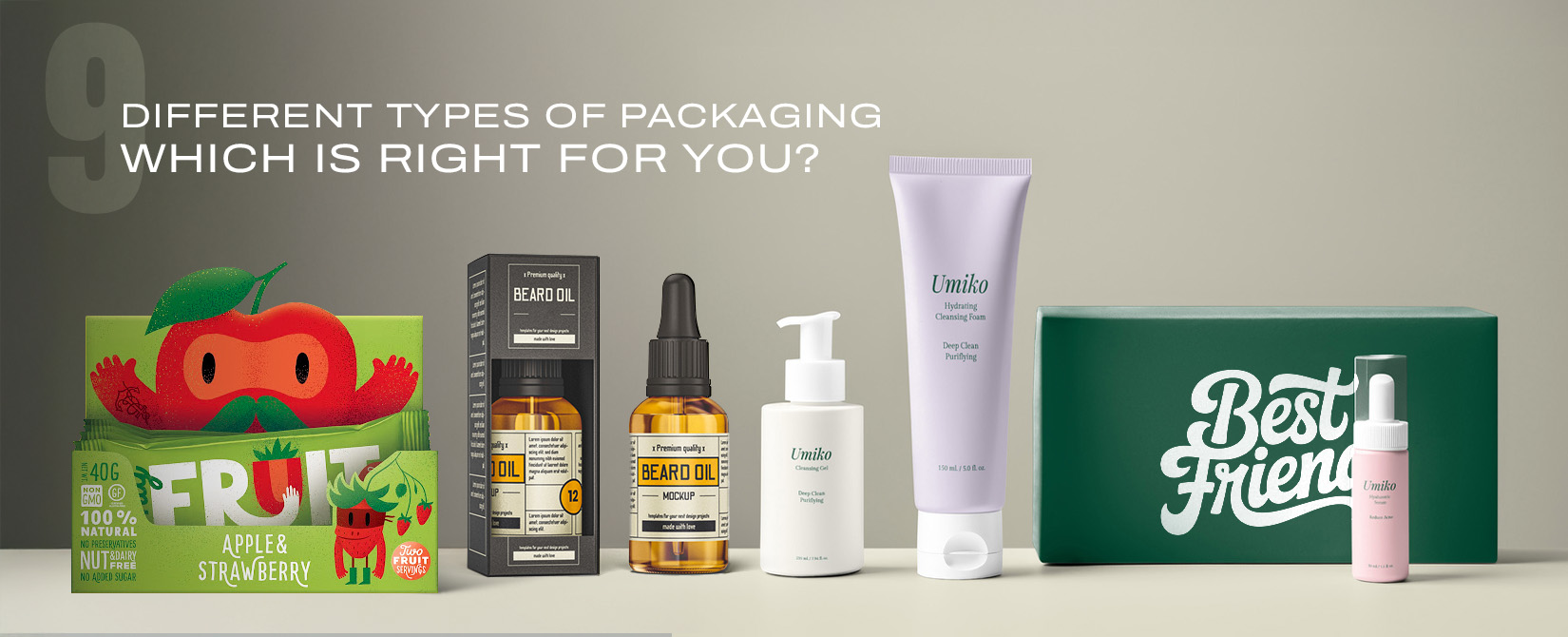
Choosing the right packaging for your product is more than just finding a box that fits. It’s about protecting the product, reducing waste and enhancing the customer experience. Whether you are a start-up or a popular brand, understanding the different types of packaging can help you make smarter choices for your business. Here are 9 common types of packaging, their key features and how to decide which one is best for your needs.
Corrugated boxes are commonly known as cardboard boxes. They are the go-to solution for shipping and storage. They are strong and recyclable. These boxes come in many sizes and shapes. The fluted inner layer provides cushioning making them perfect for fragile or heavy products. Their key features include:
However, these boxes may not be the best fit for high-end or display packaging without additional inserts.
They are made from highly condensed paperboard. Rigid boxes are known for their durability and high-end appeal. These boxes are often used for smartphones, jewelry or high-end cosmetics. Their benefits are as follows:
Rigid boxes are more expensive and not collapsible which increases their shipping costs.
Folding cartons are also called paperboard boxes. They are lightweight, foldable, and ideal for shelf-ready products. They can be fully printed and laminated for an attractive look. Key characteristics of these boxes include:
They are not a good option for heavy or fragile items unless combined with inserts or external protection.
Flexible packaging includes stand-up pouches, vacuum-sealed bags, and sachets. These are light-weight and require less material. They also offer excellent shelf presence. This type of packaging is used for snacks, supplements, powders and liquids. Key features involve:
Minimal material use and light-weight
Resealable and Tamper-Evident Options
Great for colorful and high-impact branding
Flexible packaging is not always recyclable. It may need secondary packaging for protection during shipping.
Plastic packaging comes in various shapes including jars, household items and health products. Plastic packaging comes in multiple shapes, including jars, tubes, and bottles. It is favored due to its versatility, durability and visibility. Plastic containers are ideal for storing food, household items, and health products. Their advantages are:
However, plastic waste gives birth to environmental concerns. That’s why you should consider biodegradable or recyclable plastic options.
Glass is a classic packaging material. It is a premium, eco-friendly and reusable packaging option. It’s non-porous, so it doesn't affect the taste or quality of the contents. They are perfect for packing beverages, sauces, perfumes, and candles. They are 100% recyclable. Glass containers are safe for liquids and food items. These containers are fragile and breakage risks are higher during shipping.
Metal packaging, particularly tin and aluminum, is often used for reusable or collectible containers. It provides a strong barrier against light, oxygen and moisture. It is durable and tamper-resistant. Further, it is recyclable and reusable. Metal packaging is suitable for candies, teas, coffees and cosmetics. It is ideal to offer a long-lasting look. However, it is more costly than paper or plastic. It is not suitable for all product types.
Clamshell packaging is a type of thermoformed plastic that folds into itself. It creates a sealed and often tamper-evident closure. It is the best way to showcase products while protecting them from damage. It is durable, protective, and tamper-proof. It is frequently criticized for being hard to open and less sustainable.
Sustainable packaging can include recycled cardboard, compostable mailers, cornstarch-based material and more. It attracts eco-conscious consumers and helps reduce waste. The important features of eco-friendly packaging include:
Improves brand perception
Reduces carbon footprint
Often customizable and stylish
Here comes the real question which packaging option is suitable for you. There are so many packaging types available; here are some key factors to help you guide your decision:
Product type plays a crucial role in determining the type of packaging. Fragile or heavy products require sturdy packaging such as corrugated or rigid boxes. On the other hand, perishable items need air-tight, moisture-resistant packaging (opt for flexible pouches, plastic or glass).
Secondly, you must consider the taste of your target audience and market trends. You can opt for premium packaging, such as rigid boxes or glass, to elevate your brand’s image. Eco-friendly packaging resonates with environmentally conscious consumers.
Your budget is also a significant factor in deciding which type of packaging to choose. Folding cartons and flexible packaging are budget-friendly choices for large volumes. Rigid, glass or metal packaging will be more expensive due to material and production costs.
If you aim for visual appeal and aesthetics, choose material that supports high-quality printing. You can consider finishes such as matte, gloss, embossing, or foil stamping for added impact.
Want to align brand with sustainability goals? Opt for recyclable, compostable or reusable materials.
The packaging you choose is more than a container; it is a part of your brand’s story. It affects customers’ perception, protects your products, and can even influence purchasing decisions. By understanding different types of packaging and matching your choice with your product, audience, and brand goals, you can make a confident decision. Do you need help customizing the right packaging solution? Contact the packaging experts at BoxesMe to explore options tailored to your specific needs.
Corrugated boxes are ideal for shipping fragile goods due to their strength and shock absorption quality. You can pair it inserts for added protection.
Eco-friendly packaging can be slightly more expensive than traditional packaging. It often boosts brand image and appeals to sustainable eco-conscious consumers.
Rigid boxes are suitable for luxury items. They offer a premium look, sturdy structure and often used for electronics, cosmetics and high-end gifts.
Most packaging types especially folding cartons, pouches and rigid boxes can be fully customized with logos, colors and finishes to match your brand.